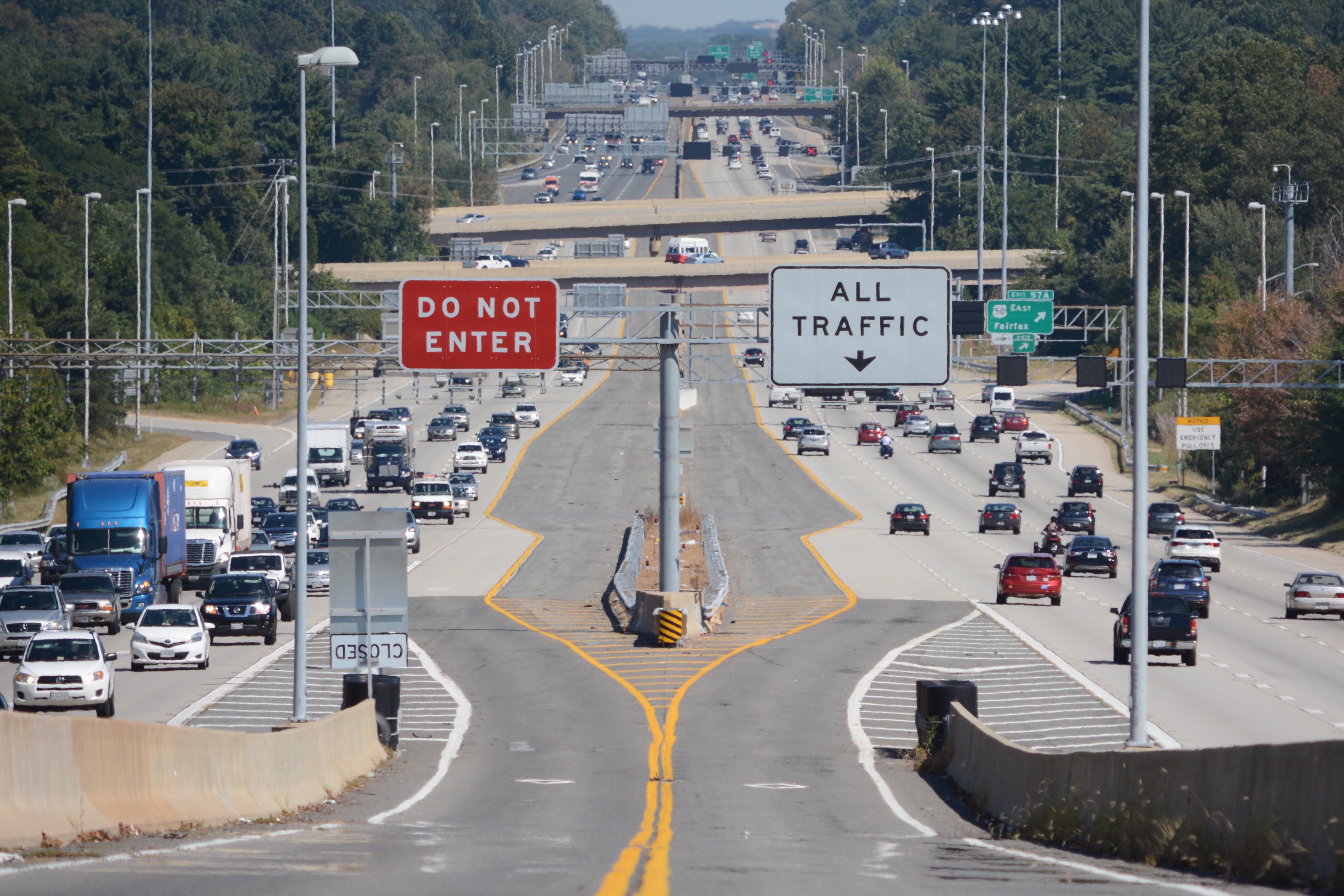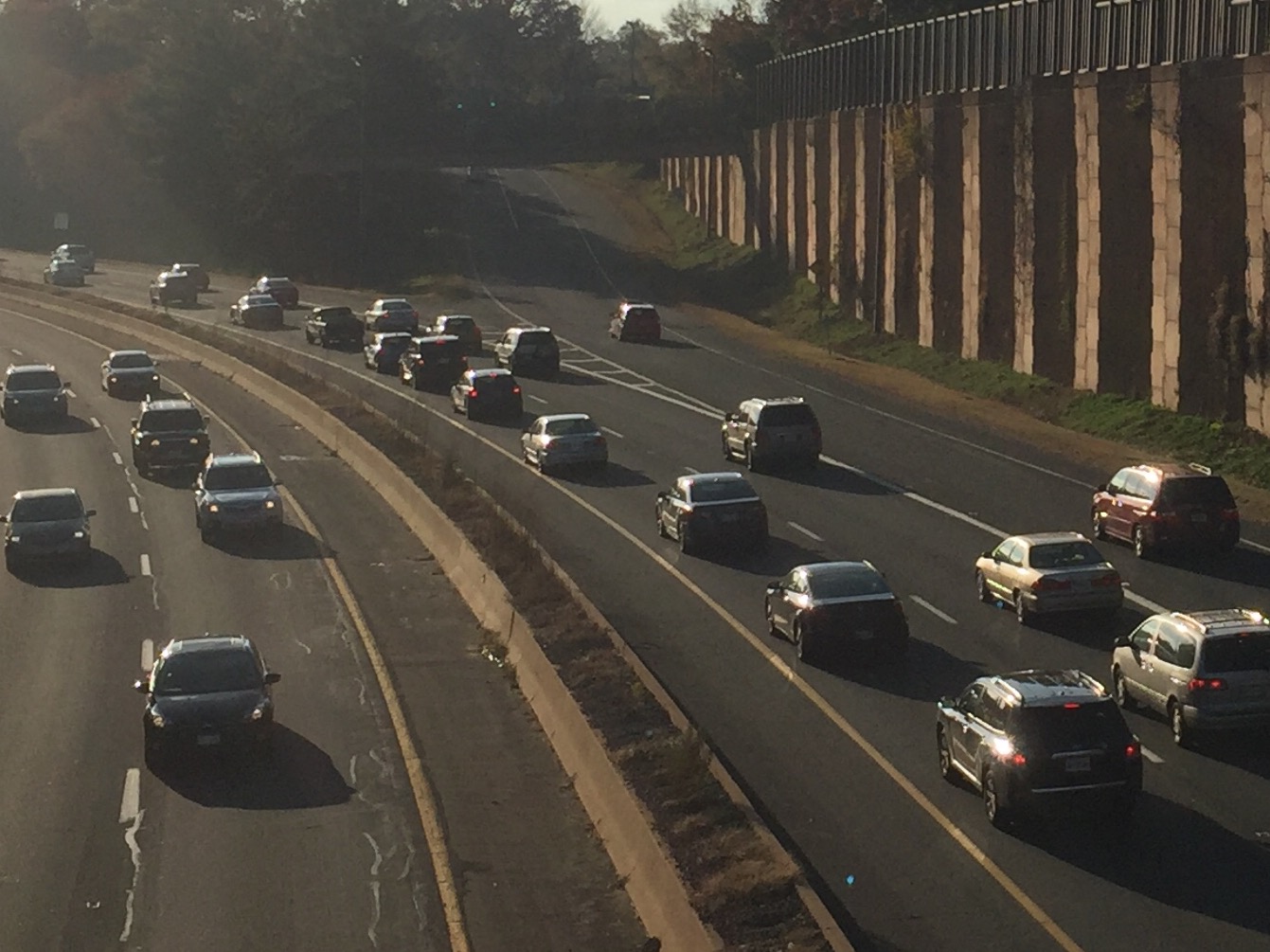WASHINGTON — Dispute over the timing of a new lane for Interstate 66 inside the Beltway and whether there would really be enough funding for transit options dominated a discussion of the plan Tuesday before the Fairfax County Board of Supervisors.
The plan would allow solo drivers, currently banned from I-66 inside the Beltway in the peak direction at rush hour, to use the lanes for a fee that would rise and fall based on congestion in the lanes to keep traffic moving at 45 mph. or faster. The plan would also expand the rush hour period from 2½ hours to 4 hours in each direction.
The Fairfax County Board approved comments on the plan by a 9-to-1 vote, but only after a more heated debate over the county’s position on when VDOT should build a third eastbound lane between the Dulles Connector Road and Ballston.
The plans call for a set of triggers based on traffic congestion to be considered after the lanes switch from HOV-2 to HOV-3 for a free ride around 2021. That move is part of regionally approved plans, separate from the tolling project.
“This is all about kowtowing to Arlington, who refuses to support what everyone believes from an engineering standpoint is needed, which is an additional lane on 66,” Supervisor John Cook, R-Braddock, says.
“I’m quite frankly sick and tired of watching an entire region of this state, and the state itself, again have to kowtow to Arlington because of its objections and its parochialism when it comes to transportation,” he added.
But Arlington County board members on Saturday expressed concern that these triggers would simply lead to the lane being constructed no matter what, at the expense of money for alternatives that could move more people or time for those alternatives to make a real impact.
The stated goals of the 66 project are to move more people through the corridor, improve travel time, cut congestion on 66 and local roads, and to increase choices for solo drivers and transit users.
Fairfax County Director of Transportation Tom Besiadny believes the four-mile expansion will eventually be needed, but other efforts should be tried first, given the cost, estimated at more than $100 million.
For one, he said, increasing the amount of transit service that’s operated particularly from the western parts of Fairfax County, Loudoun County and Prince William County, actually would be a very cost-effective way of increasing throughput in the corridor without doing a major construction project.”
In Loudoun County, “every new bus that they run from their park and ride lots to downtown fills up, and they put 40 to 50 people on every one of those buses. They’re restricted by the amount of money that they have to operate bus service, but every new bus that they put on to downtown fills up, so I think there are some measures that could be done in the short term, prior to making the major capital investment in widening,” Besiadny adds.
But Supervisor Pat Herrity, R-Springfield, argues the change is needed sooner, especially since plans to add HOV rules or tolls for reverse commuters on I-66 inside the Beltway have been pulled following public comment.
“You need it in the counter-peak direction already, you’re going to need it in the peak direction. Yes, you can do all the transit stuff, and the transit stuff will help, but you don’t toll without adding capacity,” Herrity says.
Supporters of adding the additional lane say it would also help ease the merge of the Connector Road and 66.
But despite promises that toll revenue could be used to fund the expansion, Besiadny says the math does not add up.
“The proposed revenue stream is about between $5 and $10 million a year … transportation projects of any magnitude are probably going to cost more than that,” Besiadny says. “$8 million [a year] doesn’t solve all the problems in this section of I-66.”
Eventually, the board voted 6 to 4 to add language to their position and a letter to Virginia Transportation Secretary Aubrey Layne that said the county believes the road should be widened near the beginning of the project.
Three of the four supervisors who voted against the language (Chairman Sharon Bulova, Jeff McKay and Cathy Hudgins) are members of the Northern Virginia Transportation Commission, which is slated to vote on the framework of the 66 plans in early December.
Cook and John Foust are also members of the commission, and voted for the language pushing for the widening of the highway.
Cook claims the plan might not pass the commission, and then “this whole project could fall apart.”
Other members of the Board of Supervisors doubt that, but McKay said the insistence on adding a lane before any transit changes could potentially scuttle the deal.
“I don’t think anyone is saying we take that off the table; the point here is that there’s an immediate need to reduce congestion on the road and so we can begin a process to address that congestion now,” he says.
“Increasing the number of people who can use the corridor and improving travel times and reducing congestion … I think there’s an immediate need to do those things today, not to wait on the future, not to wait on a big construction project,” McKay adds.
Bulova called design and construction of a new lane “a major cost” that should not be waved away.
“If you’re able to address the congestion and able to address issues through transit, isn’t that something that we should try to do?” she asked.
Hudgins points out that the second phase of Metro’s Silver Line, stretching from Reston through Dulles into Loudoun County, is scheduled to open just a few years after tolls are put in place.
Hudgins was the only supervisor to vote against the overall comments from the board after the language on the additional lane was accepted.
“There is an investment that can be made in the other areas surrounding this project that can make a difference for [the] long term versus the short term,” she said.
McKay emphasized that the comments on the plan are not an endorsement, and that the board hopes VDOT continues to make changes.
The entire I-66 project inside the Beltway is being considered separately from the plans for new toll lanes between Gainesville and the Beltway that would operate similar to the 95/495 Express Lanes.







